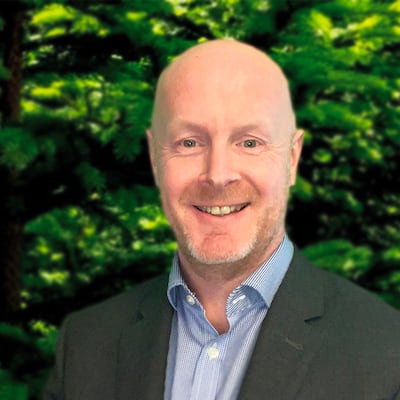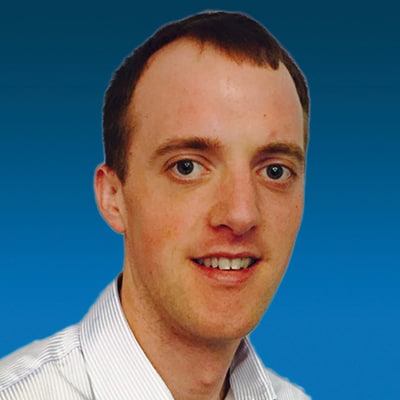
Gary Landels
The UK Government recently set out its Ten Point Plan for what is referred to as the “Green Industrial Revolution,” an all-encompassing phrase to drive the UK toward a net-zero carbon economy by 2050. It’s a bold and ambitious plan that touches on several aspects that are close to PSC’s heart as specialist consultants to the electricity industry. In this blog series, Gary Landels asks questions of PSC’s industry experts in the offshore wind, transmission and distribution sectors and discusses what impact and potential solutions could be developed and/or implemented to help ensure the targets set in the UK’s Ten Point Plan can be achieved.
Distribution

Dr. David Mills, PSC Senior Power Systems Consultant
In the first two blog posts in this series, I spoke with my PSC colleagues Mike Hook and Steve Nutt about their views related to the UK’s Ten Point Plan in their areas of expertise. For the last post of this series, I asked my colleague Dr. David Mills, a Chartered Electrical Engineer leading our UK studies and innovation team, to share his thoughts on how the UK electricity distribution business will transition to meet the changing needs of both the suppliers and their consumers.
GL: What do you see are the biggest challenges facing the UK distribution networks as they continue their transition towards supporting a net-zero carbon economy?
DM: Over the past decade, distribution companies have become increasingly active because of the shift from centralized conventional generation to more distributed renewable energy and this has created a need for more active management of distribution networks. However, we are just at the beginning of what will need to become an accelerating change to meet the UK’s net-zero targets. I see two big challenges which the distribution networks will need to overcome to make the net-zero targets achievable:
- As a result of the decarbonization of the transport industry, particularly with clear government support for electric vehicles (EVs), a significant demand for both infrastructure and energy will need to be accommodated. For example, with EVs, it is still not understood what a typical demand profile will look like and how controllable the charging cycles will be. PSC has been undertaking a number of projects with UK Distribution Network Operators (DNOs) looking into forecasting the impact different demand uptakes will have on the network and how that demand can be balanced in a way to ensure network investment can be optimized to deliver the best value for consumers.
- The forecasted growing use of electricity coupled with increasing public awareness of the energy industry underscores that the availability and reliability of the power system are vitally important. As we move towards net-zero and make use of renewable energy sources and electrification of transport to reduce our carbon emissions, the availability of the power system will become even more critical to people’s daily lives. This is a challenge for the DNOs which are having to operate a system with more unknowns and potentially smaller margins whilst also accommodating new technologies onto the system. These new technologies present an opportunity to introduce innovative services to the DNOs such as dynamically controlling reactive power to reduce system losses and changing operating behavior to reduce harmonic distortion.
In general, the DNOs have already started investigating solutions to the challenges that look to be facing the industry and I’ve been pleased that our studies team has been able to actively support some of these initiatives. The next step is to see how all these concepts can integrate and work together to ensure the system remains stable.
GL: This all sounds like a lot more monitoring and data to operate the system more actively. What are the distribution networks doing to make sure they can access and handle this?
DM: Most definitely, all the systems that allow the DNOs to transition to becoming Distribution System Operators (DSOs) and operate their networks more dynamically require large amounts of monitoring and data processing. The DNOs have been steadily increasing the amount of monitoring they carry out on their networks and the introduction of smart meters is also looking to increase this further. This brings new challenges in that this data needs to be analyzed in a useful way to make use of probabilistic methods to assess the impact it will have on their networks and customers. PSC has been working with a number of DNOs, advising them on how to improve and automate the processing of their data, which will then feed into their power system analysis and network investment decisions.
Additionally, we are also starting to see a significant level of increased data monitoring and exchange with new generation and energy storage systems that were previously not of concern. This increased data collection allows the DNO to get a better understanding of what is taking place throughout their network and is key to actively managing any system constraints. Working closely with the DNOs and developers, my team is well placed to advise on these requirements and provide recommendations with regards to potential services that may be of interest to the DNOs. You can read about how we worked with WTI on their UK waste-to-energy projects and view our e-book, “IIoT and the keys to actualizing the decentralized energy revolution” for more insights about the impacts of a more decentralized grid.
GL: What are the biggest risks you see with all of these new technologies and systems required for the DSO transition and supporting the net-zero targets?
DM: All the DNOs are investigating and implementing different approaches to managing their system and operating more effectively. In general, all of these approaches aim to avoid investing unnecessarily in the DNO networks to resolve thermal or voltage constraints. This saves costs for the developer and the consumer whilst also maximizing the usage of existing network assets. However, a lot of these schemes require real-time data, system analysis and knowledge of upcoming network events. As with any system, the DNO will occasionally experience system events that trigger alarms that have to be managed by the relevant control rooms. However, these new systems introduce increasing complexity and require a greater degree of analysis to identify the source and resolve it. PSC is currently working closely with WPD and Harmonic Analytics to develop a new control room tool that supports the processing of these alarms to both make it easier to resolve but also provide an early warning sign for trends.
The new technologies that are being introduced into the system bring about an issue that has been seen on the transmission system and could well materialize into the distribution networks. All of these new technologies introduce new and more complex control systems, and the interaction between these systems may produce unexpected behavior. It is therefore important that the DNOs continue to develop their system modeling capability to understand the response of their systems at a more detailed level. This is a trend that we have seen in some of our other regions as detailed electromagnetic transient models or generators and controllers are being incorporated into traditional DNO system planning.
To find out more about PSC’s power system modeling and study capabilities, click here.
If you’d like to speak to us about your next project or how to get started meeting your net-zero targets, please contact us.
